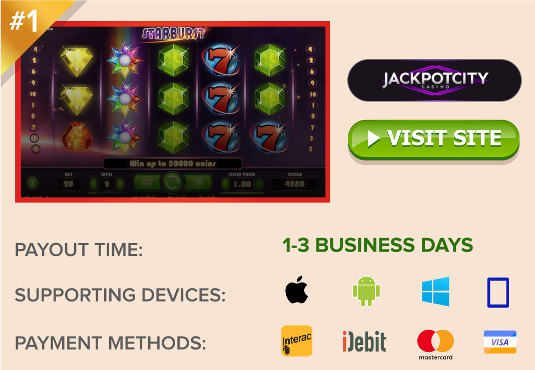The Mysterious Origins of Farkle
How old is Farkle and who invented it?

The history of Farkle has long been a conundrum. Based on common theories, it could be younger than 40, or more than 500 years old! It’s truly a mystery, but a very interesting one at that.
In the following passages, we’ll explore the hypothetical origins of Farkle, as well as the more recent factual knowledge we know to be true. It may not make you a better Farkle player, but it will definitely give you an edge in the possession of unique knowledge next time you gather for game night.
The Theoretical History of Farkle
The actual origins of this popular dice game will vary depending on who you ask. There are three basic theories as to how and when the game came into existence, each naturally corresponding with the origins of its unique name.
#1 Farkle was Invented by Sir Albert Farkle
The most documented theory is that Farkle was invented by a member of old English nobility by the name of Sir Albert Farkle I of Wasack.
The loosest accounts simply state that Farkle was invented by Sir Albert Farkle in the 15th century. Keith Souter, author of A Pocket Guide to Dice & Dice Games, expands on the Sir Farkle hypothesis, pinpointing the date as 1492, and the location as Iceland.
Much more detailed iterations of the tale say that his full name was Sir Albert Farkle I of Wasack; son of Sir Anthony XVIII of Wasack who no longer wished to carry on the famliy’s first-born-son name of Anthony. Instead, he left the child unnamed for at least a year until he said his first word, which sounded like “Farkle”. Hence he became Sir Farkle I of Wasack. Even more dubious extensions of the story say the child was playing with wooden dice blocks when he said it.
The problem with this theory, however, is that there’s no documentation to back up any of this! No records of a Sir Albert Farkle, a Sir Anthony XVIII, any “Sir” anything “of Wasack”. There’s no record of there even being a place called Wasack! And if the story were true, what would the child’s playing with dice at the time of his naming have to do with him inventing a game with dice as an adult in Iceland? So no, I find this all very hard to believe.
#2 Farleberries of Texas
A second theory states that Farkle was named for the wild farkleberries (yes, that’s really a thing!) that grow among the woodlands of east Texas. They look very similar in shape and size to blueberries, but are a darker color.
As this tale goes, the game was invented by “early settlers” of Texas who found that the small, viburnum fruit hardened when dried. As such, they would dry the farkleberries and carve them into blocks to play various dice games. Ostensibly, the name came from this derivational berry.

Once again, there are some large holes in this rationale. First and foremost, when dried, the frakleberry looks like this (see photo right). Not only does a dried fruit bear no insides, this particular variety would be incredibly small for making dice. Wouldn’t it make much more sense to carve a piece of wood from the trees so readily available in the woodlands of east Texas?
Secondly, this version gives no time frame for the invention of Farkle. It merely states “early settlers”. Anyone with knowledge of early Texas history knows that the region was settled numerous times throughout history – by Native Americans around 500 BC, by the French for a brief period in the late 1600s, by the Spanish throughout the 1700s, then by Mexicans in the 1820-30s, and by Americans shortly thereafter.
#3 Oh, Farkle!
Last but not least, some say the game was named for a common expletive – you know the one! – or rather a less repulsive version thereof. Someone who attempts not to use obscene language in front of kids, for example, might say “Oh, farkle!” instead of… well, you know.
Considering the fact that to ‘Farkle’ is to lose your turn, scoring no points at all, this theory may actually be the only one that holds any water. But again, it’s only hearsay. There’s is absolutely no evidence to back this up.
Factual Farkle History
What we really do know about this game is that the first trademark for “Farkle” was filed with the US Patent and Trademark Office in 1982 by Moosehead Enterprises of Dayton, Ohio. It was abandoned the following year. Jones/Wingard Inc of Dallas, Texas picked up the trademark in 1984, and once again, it was abandoned the following year.
In 1986, that same company rebranded itself Farkle Games, Inc. and took up the trademark name again. This is when the first Farkle dice games began hitting the shelves.
Things got interesting, however, when another game soon entered the market under the name “Farkel”. Note the reversal of the E and L at the end. As it turns out, a trademark application for the name “Farkel” was filed back in 1979 (predating “Farkle” by three years), and registered in 1982. This brought about the debate of which game came first.
With no reasonable answer, the owners of Farkel decided to clear it up on their own. In 1997, Chalres Edwin Potter filed for a trademark (approved in 1998) on the phrase, “The Original Old Farkel a Game of Guts and Luck”.
No dispute was made to that claim. However, in 2011, Patch Products Inc (then-owner of the Farkle name) filed a trademark for its own claim to the game’s origins; “Farkle The Classic Dice-Rolling, Risk-Taking Game”.
The two are now sold in tandem throughout North America and beyond. And while there are very slight rule variations between the two, most buyers don’t even know there’s the difference.
Want to learn more about the classic (or is it original?) game of Farkle? Continue your education with the pages below…
- How to Play Farkle
- Farkle Tips & Winning Strategies
- Farkle Dice Rolling Probabilities
- Mobile Farkle App for iOS and Android
 Jackpotcity.com is our editorial pick for your gaming needs. Currently offering an entire suite of casino games, as well as a wide range of Canadian deposit options, JackPotCity truly offers world-class gaming.
Jackpotcity.com is our editorial pick for your gaming needs. Currently offering an entire suite of casino games, as well as a wide range of Canadian deposit options, JackPotCity truly offers world-class gaming.





